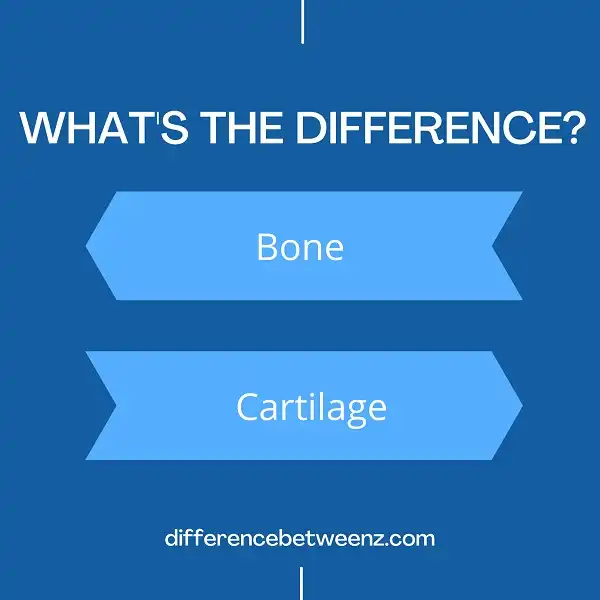Bone vs. Cartilage
What is Difference between Bone and Cartilage? Both bones and cartilage are important parts or tissues of our body, but they differ greatly in structure and function. If you want a little more information about this interesting subject, continue reading, as we explain below what is the difference between bone and cartilage.
Difference between Bone and Cartilage
Bone
Bones are a type of hard tissue that makes up the skeletal structure of the body. They can be classified as long, short, flat, irregular, sesamoid and sutural.
The main functions of bones are to protect the body against mechanical damage, to allow movement of the body, to provide the body with a framework or form, to store minerals and to produce red and white cells (erythrocytes and leukocytes).
The bones make up most of the axial and appendicular skeleton. Many of them are composed of osteoblasts (progenitor cells), osteocytes (mature bone cells), and osteoclasts (large cells that bone tissue uses for growth and repair). The bones are highly vascularized.
Cartilage
Unlike bones, cartilages are not as stiff and hard and are present in areas of the body such as the ears, nose and joints. In the joints, the cartilages cover the ends of the bones and act to absorb the force of the collisions and thus prevent the bones from rubbing against each other.
There are different types of cartilage, for example, there are hyaline cartilages, fibro cartilages and elastic cartilages. The main functions are to maintain the shape and flexibility of the fleshy appendages, support the respiratory tract, reduce friction of the joints, and block shocks between bones.
Key Differences between Bones and Cartilage
- Bones are much harder than cartilage.
- Cartilage is softer than bones.
- The bones make up the skeleton and help the movement, while the cartilages reduce the friction of the joints.


